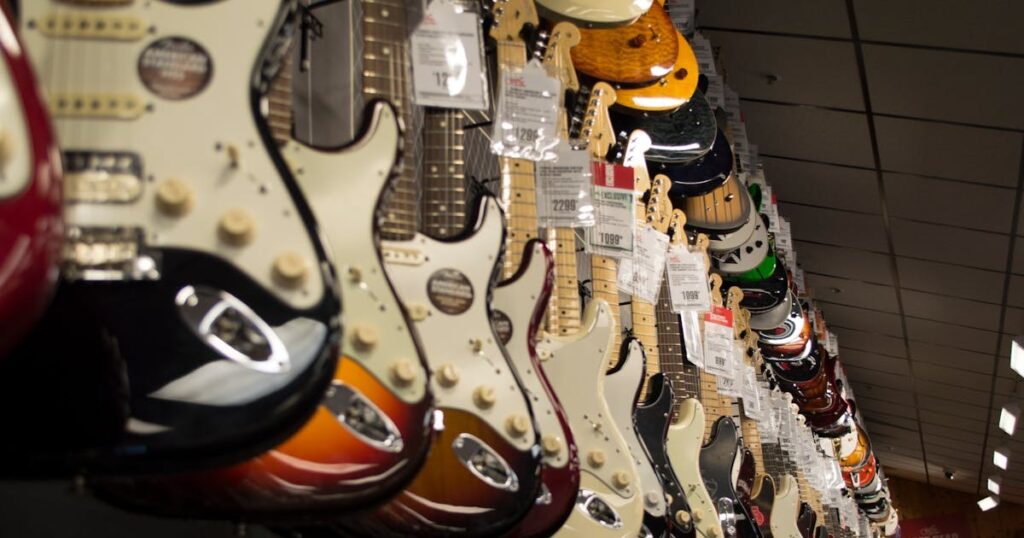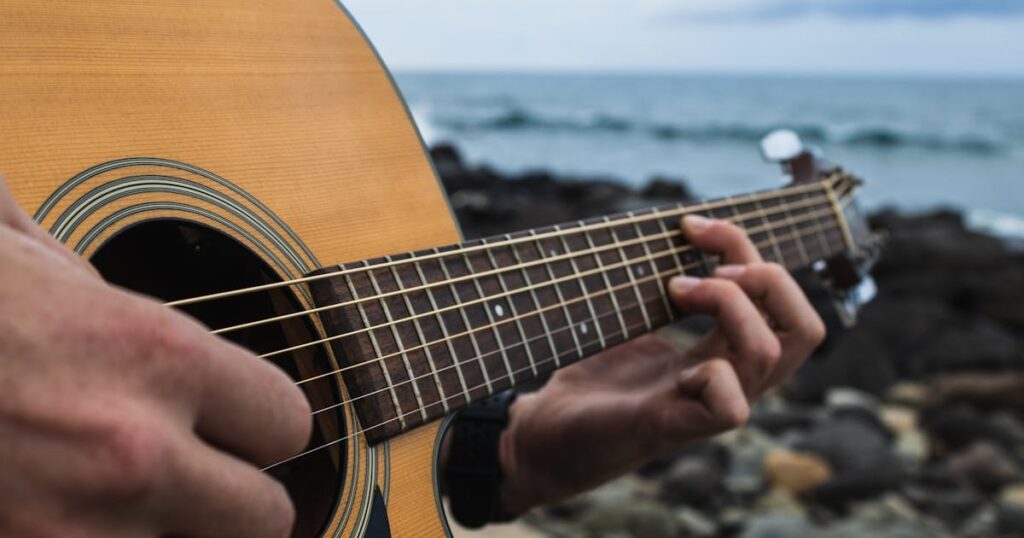Key takeaway: The electric guitar consists of various crucial parts, each contributing to its sound and playability. Understanding the body, neck, headstock, tuning machines, truss rod, nut, and fretboard enhances appreciation for this musical instrument, enriching the playing experience for enthusiasts.
Electric guitars have become a staple in modern music, with their signature sound and unique design. While they may seem complex to the untrained eye, electric guitars are made up of several key components that work together to create the iconic instrument we know and love today.

In this article, we will explore the different parts of an electric guitar and how they contribute to its overall functionality and sound.
Body
The body of an electric guitar is often made from solid wood or multiple layers of wood laminated together, giving it its sturdy structure. The type of wood used can greatly impact the tone and sustain of the guitar. Common woods used for electric guitar bodies include alder, ash, mahogany, and maple.
Electric guitar bodies come in various shapes and styles, with some of the most popular being the classic Stratocaster shape, Les Paul shape, and Telecaster shape. These variations not only contribute to the aesthetic appeal of the guitar but can also affect its sound.
Neck
The neck is a crucial part of an electric guitar as it holds the frets and strings in place. It is usually made from a single piece of wood or laminated layers for added strength. The type of wood used for the neck can also impact the tone and feel of the guitar.
Most electric guitars have either a bolt-on or set-in neck design. A bolt-on neck is secured to the body with screws, and it allows for easier adjustment and replacement. On the other hand, a set-in neck is glued into place, providing better sustain and resonance.
Headstock
The headstock of an electric guitar is located at the end of the neck and houses the tuning machines. It also holds one end of each string in place.
The shape and design of the headstock can vary depending on the brand or model of the guitar. Some popular designs include a classic 6-in-line style or a more modern 3×3 design.
Tuning Machines
Tuning machines, also known as tuners or machine heads, are used to adjust the tension of each string to produce the desired pitch. They are located on the headstock and can come in various styles, such as open-gear or enclosed.
Electric guitars typically have six tuning machines, one for each string. These machines allow for precise tuning and help keep the guitar in tune while playing.
Truss Rod & Cover
The truss rod is a metal rod that runs through the neck of an electric guitar. Its purpose is to counteract the tension of the strings and prevent them from pulling the neck out of shape. This helps maintain the proper intonation and playability of the guitar.
Some electric guitars also come with a truss rod cover, which is a small plate that covers the opening where the truss rod is accessed. This not only protects the truss rod but also adds a decorative element to the guitar.
Nut
The nut of an electric guitar is a small piece of material, usually bone or synthetic material, that sits at the end of the fretboard near the headstock. Its purpose is to hold the strings in place and maintain proper string spacing. The height and material of the nut can greatly impact the playability and tone of a guitar.
Fretboard
Last but not least, we have the fretboard, also known as the fingerboard. It is located on top of the neck and is where players press down on strings to produce different notes. The fretboard is typically made from a type of wood, such as rosewood or maple, and has metal frets embedded into it.

The material and radius (curvature) of the fretboard can affect the feel and sound of the guitar. For example, a flatter fretboard allows for easier string bending, while a curved one provides better playability for chords.
FAQs
What are some common woods used for electric guitar bodies?
Alder
Ash
Mahogany
Maple
What is the purpose of a truss rod in an electric guitar?
The truss rod counteracts the tension of the strings to prevent them from pulling the neck out of shape and helps maintain proper intonation and playability.
Are there different types of fretboard materials?
Yes, some common materials for fretboards include rosewood and maple.
How many tuning machines does an electric guitar typically have?
Six tuning machines, one for each string.
Conclusion:
Now that we have explored the various parts of an electric guitar, it’s clear to see how each component plays a significant role in the instrument’s overall function and sound. From the body to the fretboard, every detail is carefully designed and crafted to create a unique playing experience for musicians.
Whether you are a seasoned player or new to the world of electric guitars, understanding these components can give you a better appreciation for the instrument and help you make informed decisions when it comes to purchasing or customizing your own.
So next time you pick up an electric guitar, take a moment to appreciate all the intricate parts that work together to create beautiful music.
